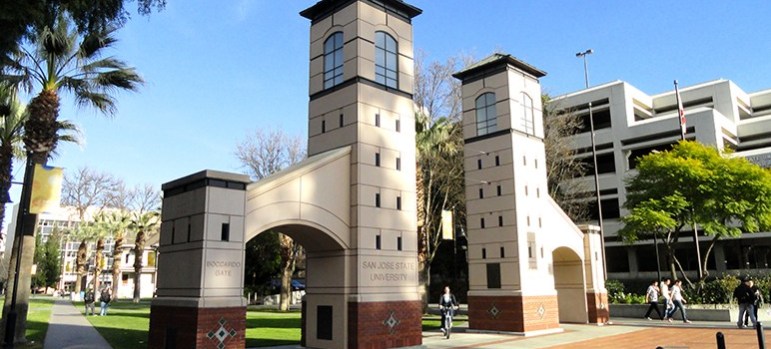Within the next week and change, Democrats who control the Legislature and fellow Democrat Gov. Gavin Newsom will need to reconcile their competing budget plans for higher education in California, with huge implications for student financial aid and the short-term fiscal health of the state’s public universities.
At issue is the 2024-25 state budget that begins July 1 and the multibillion-dollar projected deficits California faces. Lawmakers and the governor are in the final, secretive sprint of the annual process to craft the state government’s spending plan.
The Legislature fulfilled its constitutional duty last Thursday by passing its budget plan. That started the clock for Newsom and lawmakers to reach a compromise for the final 2024-25 budget by late June.
And on higher education, they’re far apart in key ways — differences that first emerged in January, when budget season publicly kicked off with Newsom’s first proposal for 2024-25.
“As depressed as I was in January, and as bad as some of the cuts still are that are included in this budget, in education I think we’ve been able to step ahead with this budget,” said John Laird, a senator and Democrat from Santa Cruz who is chair of the budget subcommittee on education, at a hearing on the Legislature’s budget last week.
How much for Middle Class Scholarship?
Newsom’s last public spending proposal, released in May, would permanently gut the Middle Class Scholarship to just $100 million annually — a serious blow to California’s dreams of supersizing college financial aid so that no university student would need to take out student loans.
The Legislature countered last week with a stark “nope,” instead keeping a past-year’s promise to grow the program to $926 million in 2024-25 and the following year.
The dueling proposals would either slash how much each of the roughly 300,000 student recipients who attend University of California and California State University would receive — or make debt-free college a closer reality.
Under the governor’s plan, average awards would drop from between $2,500 and $2,800 to just over $300. If the Legislature gets its way, average awards would range from $3,100 for UC students to $3,600 for Cal State students.
The cuts would likely mean more college loans for students, an official with the governor’s Department of Finance said at a hearing last month.
The Legislature’s plan “significantly brings back the Middle Class Scholarship, right at the time that parents and students are making decisions about what colleges to go to and whether they have the financial resources to go to certain public higher education institutions in California,” Laird said at the budget hearing last week.
Will Cal Grants help more students?
The Legislature also seeks to partially expand the Cal Grant, the state’s marquee financial aid program, for the 2025-26 budget year. If the plan is approved, another 21,000 students would receive the grant for the first time. About 400,000 students receive a Cal Grant.
Newsom in May formally rejected any expansion of the Cal Grant, citing California’s colossal fiscal hole. But legislative budget leaders have been adamant about rolling out the Cal Grant to more students despite the state’s difficult finances to make good on years of aggressive advocacy from lawmakers.
The cost would be $47 million in one-time funding to ensure current students receiving the Cal Grant under the current rules would remain in the program.
If the plan becomes law, about 11,000 more community college students would get the grant in 2025-26, which would appear as a cash award of about $1,650 and then cover tuition at a UC or Cal State if the student transfers. Cal Grants are valid for four years of full-time enrollment. The number of new recipients would grow with each subsequent year.
This is a lower number of new recipients, and smaller price tag, than what’s in the original Cal Grant expansion plan. That’s because the partial roll-out would keep the current 2.0 GPA requirement for community college student eligibility while the original would have removed it.
Still, under this new proposal, students would be able to re-establish eligibility by taking fewer classes through a special program — 12 units instead of the current 16 — and earning a 2.0 GPA. The number of units a student would need to rehabilitate their GPA would drop to nine units in 2026-27 and six units in 2027-28. The plan calls for no GPA requirement by 2028-29.
These details were confirmed by the office of Assemblymember David Alvarez, a Chula Vista Democrat who is chairperson of the Assembly’s budget subcommittee on education.
Mikhail Zinshteyn is a reporter with CalMatters.

